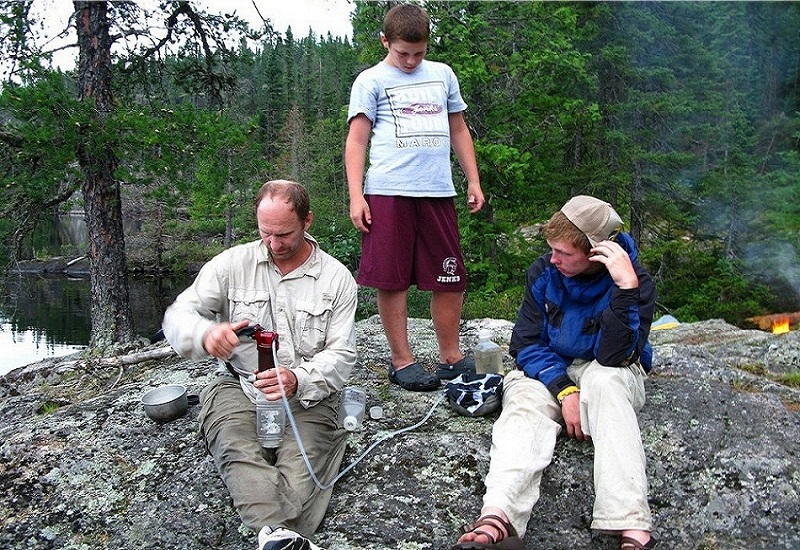Are you planning to venture into the wilderness? Well, if you are, then you have to bring some water to drink. You’ll go to need it in order to avoid dehydration and also to keep you going throughout the entire trip. However, what are you going to do if you are planning to have a long trip into the wild? You can’t bring an entire jar of water since that will slow you out. Also, if you are bringing a couple of individuals with you, then that water in your bottle will run out in minutes.
So, to take care of that situation altogether, you will need a water filter. There are a handful of backpacking water filter reviews available online, which you can refer from if you want to have one. This filters will purify the water that you’ll find on creeks and rivers, making it safe for drinking. With this filter at your backpack, you will not run out of water to drink. But, how does it work? Will it need batteries? We will go to discuss the matter on this article.
How does it work?
To start things off, filters doesn’t need batteries. No, it will filter that water without the aid from electrical sources. This is absolutely a good advantage since you won’t be finding electrical outlets in the wild that you can charge it on. Other forms of removing microns in a water are chemical treatment and UV purifiers.
Let’s just focus on water filters. These filters are very useful on your trip. When you are thirsty, every water that you will spot may look clean. Like the water on lakes, creek, and rivers. You will be tempted to quickly consume those water in order to quench the thirst that you are feeling.
But, make no mistake. Even if those bodies of water look clean, they may contain harmful microorganisms like bacteria, protozoa and viruses. These microorganisms can put a dent on your health. Some of them are even deadly. That’s why you have to separate them from the water before you can take a sip of it. These are where water filters come in. They are great assets on your trip.
Now, let’s discuss how a water filter works. Water filter separate microns from the water through filtration. You can buy a water filter that is already built on a bottle or you can choose the filter that outputs the water into a separate bottle. First, the water is put into an intake hose. Then it will be pressed into the filter manually or through suction.
Filters have very small pores, enough to separate organism of microscopic size from the water. This pore sizes are described through the use of the term “micron.” Once micron is equivalent to 1/1,000 of a millimeter. A filter should have 0.4 microns pore size in order to filter bacteria.
Microorganisms, however, are not killed during filtration. They will just remain trapped on the filter. That’s why you have to wash the filter after several usage in order to reduce clogging. The filtered water will now come out on the filter outlet after the entire process. You can now enjoy drinking the water without the fear of exposing yourself to those harmful microorganisms.
Which water filter to choose?
Basically, every water filter will work fine. But, you get certain types depending on your personal preferences. If you want to avoid bringing extra things along the trip, then you can choose bottles with the filters already built-in. However, some may want to have the filtered on a separate bottle, so built-in filters are not the one for you. Overall, it is quite easy to select the filter for your trip. There are also a lot of backpacking water filter reviews available around the internet. You can check them too. The flow rate is also a feature that you can touch on. A filter that can give out one liter of water in one minute is usually enough.

